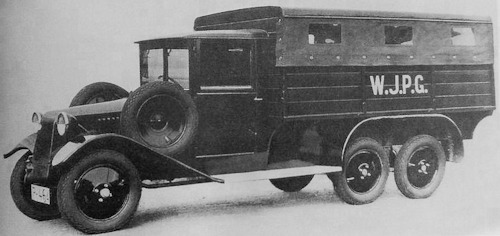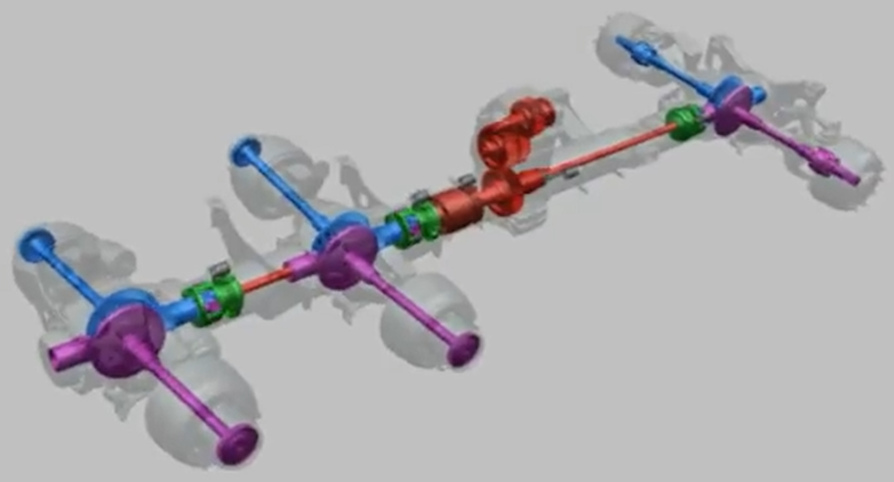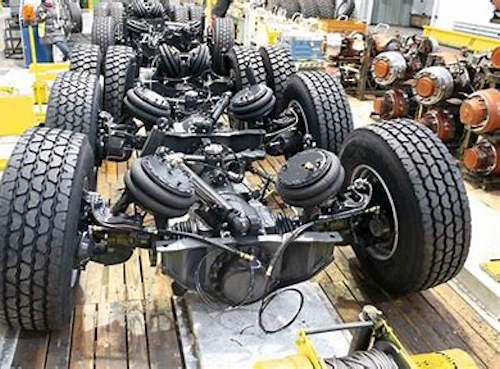Today the operational capabilities of modern wheeled tacticians present structurally quite similar solutions in mechanical terms, allowing platforms used for military use to play a versatile role based on the final conformation of the vehicle. With a similar concept of optimization, however, there is a valid voice out of the pack as regards mechanical motion transmission solutions, the Czech TATRA. A brand that has wanted to focus since 1923 on Backbone, as it is called in English the longitudinal and central "tube" that encloses the transmission as does the human spine by enclosing and protecting the medulla.
Reliability and functionality
The Tatra as company based in Kopřivnice (Czech Republic) collaborates with the Czechoslovak Group CSG holding company, an international leader in military and civil technologies and, with a 19% stake, with the Dutch DAF Trucks, now a European subsidiary of the US Paccar.
The line of specifically military vehicles is followed by Tatra Defense Vehicle and the interaction with the Daf brand is evident by observing the cabs and specific chassis as well as the components.
The system a Backbone developed by the Austrian engineer Hans Ledwinka way back in 1923 sees the first application on Tractor T11 finding much success in off-road use, which is why the system is also assembled on heavy vehicles, the first was the Tractor T26 6x4 (following photo).

The system
Without prejudice to the characteristics of sturdiness and elasticity of the frames made for military and construction site uses, Tatra already assembles the dashboard, pedals, steering wheel and seat fixed to the frame rather than in the cab in the first stages of construction of the platform.
If you are passionate about mechanics after looking at the images, you will probably have asked yourself some questions like: where are the differentials? Or, How does the differentiation of the revolutions between the axle shafts take place? I asked them too...
The concept of transferring the motion from longitudinal to transversal used on some Tatra trucks essentially exploits a telescopic transmission shaft, such that they can rotate one inside the other with two different rotation speeds.
If in the traditional drive axles that we know, the axles flow from the wheels to the wide differential casing, in this system there are only the crown gears at the end of the semi-axes. In fact, to cross the rotary movement from longitudinal to transversal, helical teeth are created on the two segments of the telescopic transmission shaft. An obligatory passage to prevent the two crowns from taking on opposite rotations by meshing opposite each other on the same helix.

If we look at the image we notice the presence on the transmission axis of a circular casing with a series of helical gears (of different colors) meshed together inside. The image is somewhat reminiscent of an epicyclic element, but in reality it is used to create the difference in the revolutions of the wheels of an axle. Someone could call it an in-line differential and maybe they wouldn't be entirely wrong.
When going perfectly straight, the system rotates uniformly with the transmission, but as soon as there is a difference in revolutions between the wheels of the same axle, the two transmission shafts modify the rotation. Actually in transmission systems full time common 4x4 vehicles (see VM90, ACTL, vtlm LINCE etc), a similar system (the third differential), is used to transfer the torque on the axles based on grip - permanent traction - but on the respective axles there is the traditional differential casing, which Tatra has replaced on some vehicles with this system.
 What are the characteristics
What are the characteristics
The system appears very orderly and without any torsion because it is enclosed in a dry jointless protection, the tube, but it also undergoes little vibration and is less cumbersome due to the absence of the traditional crankcase balloon containing the box with crown, planetary and satellites. A more uniform, smoother underbody with more light in theoff road, but also space available to set up flaring armored panels.
Conversely, having more space available, it is instead possible to have a lower platform set-up. The system is modular allowing you to assemble vehicles with 2, 3, 4, 5 and more axles with optional all-wheel drive that can be inserted with the traditional reducer/distributor module present after the gearbox.
The suspensions for this type of transmission include independent wheels with a swinging arm regulated by the pneumatic showerheads also at the rear, where they replace the characteristic tandem with the cradle movement.
Tatras 815-7
The system Backbone adopted by Tatra it is used in the 4x4, 6x6, 8x8 and 10x10 configurations of the military production of the 815-7 (opening photo), substantially the copy of the civilian Phoenix.
There is a wide choice of speed changes: manual 16-speed ZF, automated Astronic 16-speed or automatic Allison with converter.
Photo: web












